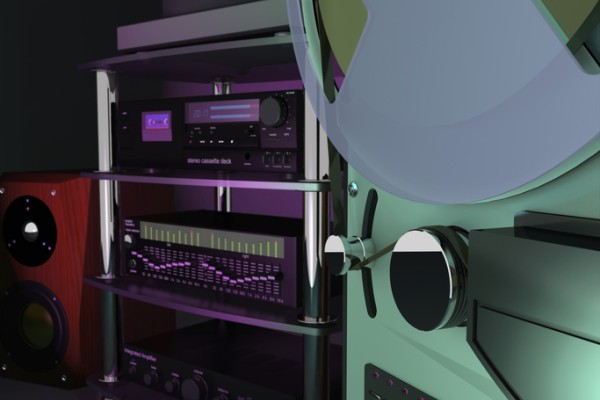
If your home is being fitted with a home theatre, distributed audio system, smart wiring or even a home automation system, chances are you’ll need an equipment rack to keep all the electronics organised, well-ventilated and easily accessible. Whether you’re renovating or upgrading, choosing the right rack setup will make a big difference to performance, longevity and ease of maintenance.
What is an equipment rack?
An equipment rack is a purpose-built frame or cabinet used to house electronic components such as amplifiers, receivers, streaming boxes, network switches, smart home hubs and power conditioners. It keeps everything organised and often provides cable management, cooling and access panels for easy servicing.
Racks are usually built to a standard 19-inch width, and the height is measured in rack units (abbreviated as ‘U’). One rack unit is equal to 44.45mm. A typical home installation might require a rack between 18U and 32U, depending on how many devices you plan to store.
Why you need one
As technology becomes more integrated into Australian homes, so does the need for a centralised and accessible place to store devices. Without a proper rack, equipment can end up scattered, overheated or difficult to maintain. A good rack helps:
- Prevent overheating by allowing proper ventilation
- Organise and secure expensive gear
- Improve cable management
- Make future upgrades or servicing easier
- Reduce the risk of interference or electrical faults
If you’re installing smart lighting, multi-room audio or other automation systems, centralised control gear will likely need to be rack-mounted.
Choosing the right size
The size of your rack will depend on how many devices need to be housed, and whether you want to allow space for future additions. You’ll also need to factor in airflow and heat dissipation. It’s usually better to overspec slightly than to end up with a rack that’s too cramped.
Most home installations require:
- Height: 18U–32U
- Depth: 500mm–800mm
- Width: Standard 19-inch (482.6mm)
- Load capacity: Varies, but typically at least 100kg for floor-standing racks
Wall-mounted racks are suitable for lighter equipment or where space is limited, but floor-standing options offer better cooling and expansion potential.
Cooling and ventilation
Electronic equipment generates heat. If you’re stacking several AV receivers, amplifiers or networking devices in one rack, it’s essential to allow for proper ventilation. Overheating can shorten the lifespan of equipment and cause performance issues.
Look for racks that have:
- Ventilated shelves or panels
- Space between components
- Optional fan kits or thermal management systems
- Adequate airflow from front to back or bottom to top
Make sure your rack is located in a cool, dry area with room around it for heat to dissipate. You may even want to consider active ventilation or a dedicated cooling system if you’re housing a lot of high-powered gear.
Rack location
Ideally, an equipment rack should be housed in a purpose-built cupboard, dedicated AV room, or even inside a ventilated cabinet. Avoid placing racks in garages, roof spaces or areas exposed to dust and temperature extremes.
Think about:
- Accessibility for maintenance or upgrades
- Proximity to power, data and speaker wiring
- Keeping it away from moisture or direct sunlight
- Allowing for clearance and airflow
Also, consider installing conduit or cable trays during construction or renovation for future wiring needs. This avoids messy retrofits later on.
Cable management
Good cable management isn’t just about neatness—it’s about safety, reliability and future-proofing. Many racks come with cable trays, tie-off points or rear access panels to keep wiring tidy and reduce strain on connectors.
Tips for better rack cable management:
- Label every cable clearly
- Use Velcro straps or cable combs instead of zip ties
- Keep power and signal cables separate
- Leave slack for servicing, but avoid loose loops
- Run cables through conduits where possible
Power and surge protection
Racks should be equipped with a clean, reliable power source. This often includes:
- Surge protection
- Power filtration or conditioning
- A centralised switch-off option
- Residual current devices (RCDs)
You should always have a licensed electrician handle any power distribution board or GPO installation in the rack.
Security
While security isn’t always top of mind during a renovation, it’s worth considering locking doors or panels—especially if the rack will be located in a shared or accessible area of the home.
You might also want to look into remote monitoring or rack-mounted smart sensors to track temperature, humidity or power usage.





